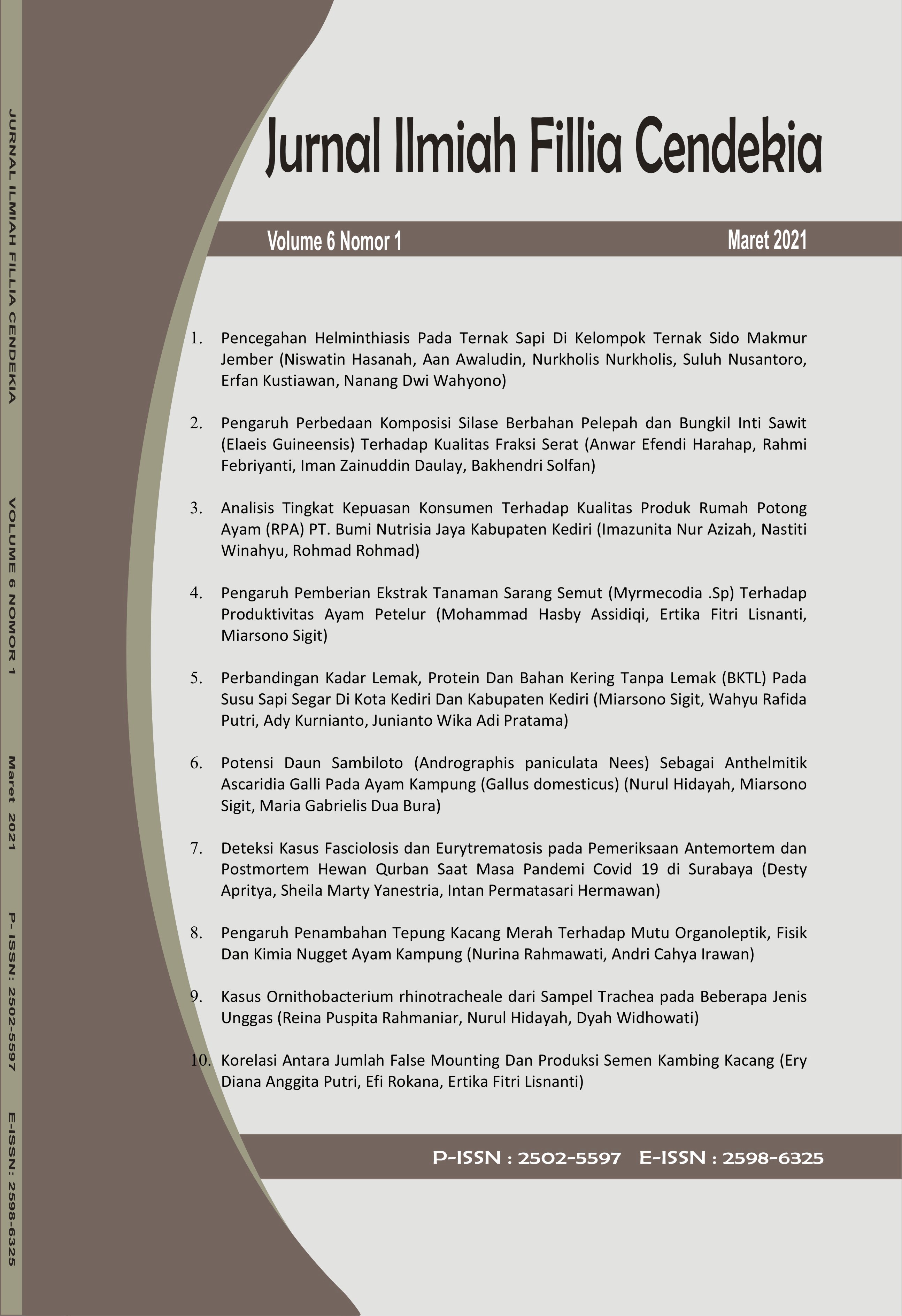Kasus Ornithobacterium rhinotracheale dari Sampel Trachea pada Beberapa Jenis Unggas
Abstract
The aim of this study was to report cases of respiratory tract infection caused by the bacterium Ornithobacterium rhinotracheale. Observations included anatomical pathology and bacterial isolation results. Poultry was necropsed, observed changes in organs, trachea samples were taken aseptically then isolated on Blood Agar, Chocholate Agar, MCA, microscopic examination and biochemical tests, including TSIA, SIM, SCA, Catalase, Urease, MR, VP. The results of the examination showed the presence of Ornithobacterium rhinotracheale bacteria, the results showed small, grayish colored colonies. Microscopic examination, gram-negative pleomorphic rod-shaped bacteria. Bacteria did not grow on MCA, there was no change in TSIA media, non-motile bacteria, the results of the indole test, SCA, MR and urease were negative. All four types of birds showed pathological changes, including hemorrhage in the trachea and lungs, but the air sacs were normal and did not show any specific lesions, only duck samples with code I-11 had changes in the air sacs. Based on the results of isolation and bacteria, it can detect the presence of Ornithobacterium rhinotracheale from several different types of poultry, including layer chickens, broilers, local ornamental chickens and ducks.










